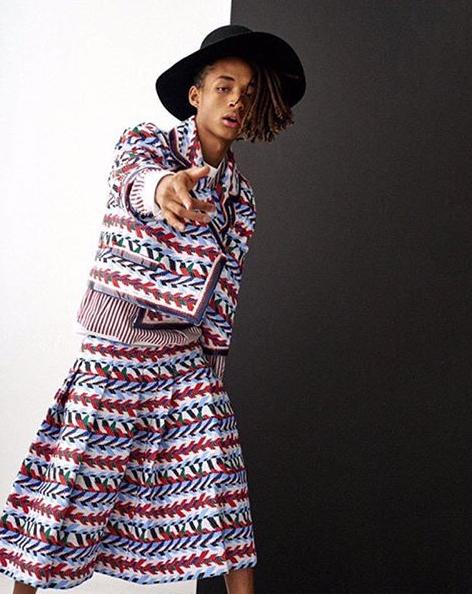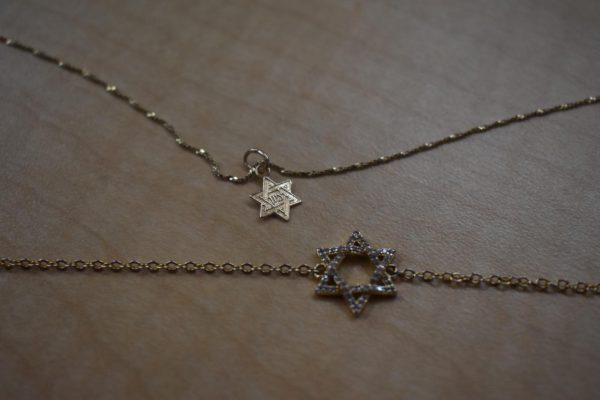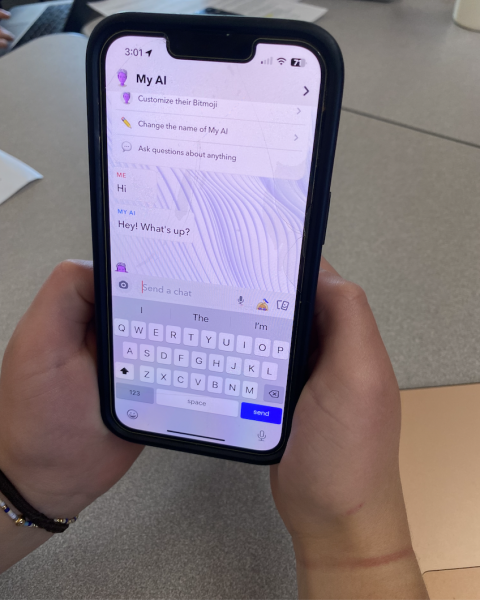How fashion shapes our identity

Jaden Smith in women’s clothing for a Vogue Korea photoshoot.
Fashion shapes identity in a multitude of different ways; from the colors we pick, to the stores we frequent, who we are is ingrained in our style. Anything we wear, from hair dye to tattoos, is apart of our style. Our individual personalities influence whether we want to dye our hair or get a new piercing. Since we are all complex individuals, we absorb many different characteristics from our environment, family, friends, and school that impact our identity.
Age
Women have been taught from a young age that there are certain things we can and cannot wear at different stages of our lives. If you’ve ever been told that you should dress your age, then you will probably relate to this.
Many of us use clothes to represent our actual age or the age we want to be. And as we grow older, our style usually goes with it. Fortunately, these “rules” have become a lot more fluid within adults. Imagine yourself now wearing bows like you might’ve done in sixth grade or purple eyeshadow when you were a freshman. At those ages, our identities were beginning to form and that has had a huge impact on how we dressed then and how we dress now. As we age, society has deemed some clothing items as “immature” or “inappropriate” for certain periods in our lifetimes. A main cause of these fashion changes, is the development of our identities. Throughout our lifetimes, we continue to develop and change as individuals. But as we grow older, societal pressures have a direct impact on what we wear and how we express ourselves, even though society has greatly expanded these fashion standards today.
Gender
When we were children, most of us were taught that pink was a girl’s color and blue was a boy’s color. But as we grow older, we are left with a huge color palette that doesn’t just exist with pink or blue. With gender fluidity and a greater acceptance of people who identify as LGBT+, our mainstream ideas of men and women’s clothing is no longer the best way to identify someone’s gender. Nowadays, people are using fashion to convey gender. Jaden Smith, a popular hip-hop artist and fashion influencer, often wears clothing that could be considered a “woman’s” garment. Using his platform, Smith has directly influenced how the world sees gender. For him, Smith doesn’t see a piece of clothing as a man’s or a woman’s. He sees it for what it is, an opportunity to express his unique sense of style and personality. Smith’s creative style has impacted me greatly and how I currently view fashion today.
Closing Note
The way we dress is like communicating without words. Whether we like it or not, people will judge us by our appearance. While we shouldn’t let our self-confidence be affected by the opinions people have of us, what we receive from people throughout our lives will have a huge impact on shaping our identity. People often blame others for what happens because of the way they dress. For example, people often blame women who are victims of sexual assault for dressing in a manner that could be seen as “provocative”. There are many misconceptions about appearances, but it is up to us to change them and discover our identity using fashion. Our sense of style is so greatly affected by our environment, society, and our personality. Unfortunately, society will continue to demonize others who take a unique approach to fashion. Like Jaden Smith, people continue to bridge the gap between what is considered a men’s or women’s garment, or what is appropriate for a certain age group. Take a risk and do not succumb to the world’s unrealistic standards of what is and isn’t appropriate for fashion today.

Bella is a senior at AHS and this is her third year as a staff writer for the Skier Scribbler. Bella is also apart of the AHS Dance Team and spends her...































